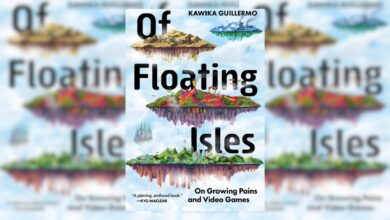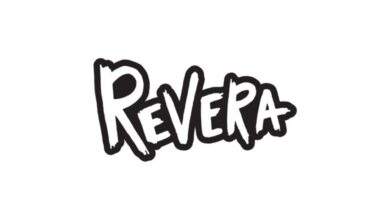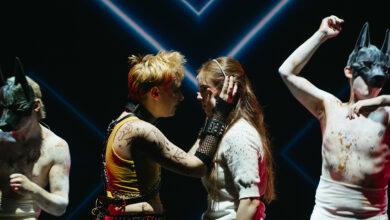Book Review: ‘Gender Queer’ by Maia Kobabe
In light of the Alberta government citing some books as examples of inappropriate content for schools and exploring restrictions for them, The Gateway is reviewing the four books listed as examples. 'Fun Home' is one of them. 'Gender Queer' is one of them.
 Supplied
SuppliedGender Queer by Maia Kobabe is yet another graphic memoir that tends to be the target of book bans. It seems like the Government of Alberta is just about ready to jump on that bandwagon.
It launched a survey about age-appropriate materials in school libraries, citing Gender Queer as an example of a book with graphic content. Now, the government is moving towards creating regulations — more likely restrictions — on what kind of content can be present in schools.
Gender Queer follows Maia, who uses e/em/eir pronouns, from eir youth to adulthood. Much of it centres around eir feelings of gender. Initially, living pretty much off-the-grid with eir kind of hippy parents, Maia doesn’t think much of gender. Rather, e is far more interested in snakes — who can blame em?
Once Maia starts going to school, e is faced with the unspoken rules of gender. Suddenly there’s rules about what girls can do and what boys can do that Maia doesn’t understand. Things like having to wear a shirt when swimming and being expected to shave eir legs.
It’s a really accurate depiction of being confronted with gender norms as you grow up. The older you get, the more rules about being a girl, or just being socially acceptable, there seem to be.
Kobabe’s depiction of eir periods was particularly impactful. Maia tried to hide it and hated it, to the point that e had nightmares about people finding out and not being able to hide eir period. Kobabe depicted it bluntly, without sugar coating it or avoiding the gross parts. The depiction of Maia’s first pap smear was similarly frank.
The parts about Maia discovering eir sexuality and the queer community around em was a particular highlight for me. Kobabe wrote and illustrated these scenes with a lot of care and felt, in many ways, like my own experience. Maia agonized over going to eir school’s queer-straight alliance (QSA) meeting, until finally e just went. The QSA became a safe space for em as a young queer person.
Other scenes about Maia navigating eir gender identity were not just executed well, but important. Things like the unsafe use of bras that are too tight instead of binders or improper use of ace bandages for binding aren’t things we should shy away from. Maia had people in er life that looked out for er and who e could, eventually, talk to about these things. However, many people don’t. This graphic memoir, while not a comprehensive guide to a transition, shows what a safe and healthy one can look like.
Beyond that, the visual representations of being genderqueer were beautiful. Kobabe’s skill as a visual storyteller is incredible, but more than that, it pushes the representation of gender-diverse people beyond just tragedy and tropes. It depicts eir identity as something beautiful and powerful, even if things are confusing at times.
Kobabe continued with eir frank approach to storytelling with scenes about eir sexual discovery. Much of that happened through books for Maia, but the step of taking it to real life relationships was daunting. Yet, even through the uncertainty, Maia knew eir boundaries and communicated em to other people.
The book ends with Maia deciding to come out to eir class of students e teaches, not just to lift the burden of tip-toeing around eir identity from emself but also to provide a queer role model for eir students.
It’s beyond ironic that this is the book the Alberta government is targetting. One that speaks to the importance of having queer representation and guidance for youth navigating eir gender and sexuality. But this is what the government seems to think it should take away from youth.
To be clear, this isn’t a graphic novel for kids — it’s best suited for high school students and adults. But restricting access to this book in all schools with no regard for the nuance of age appropriateness would strip youth from a healthy and well-told story of queer and gender-diverse identities.




